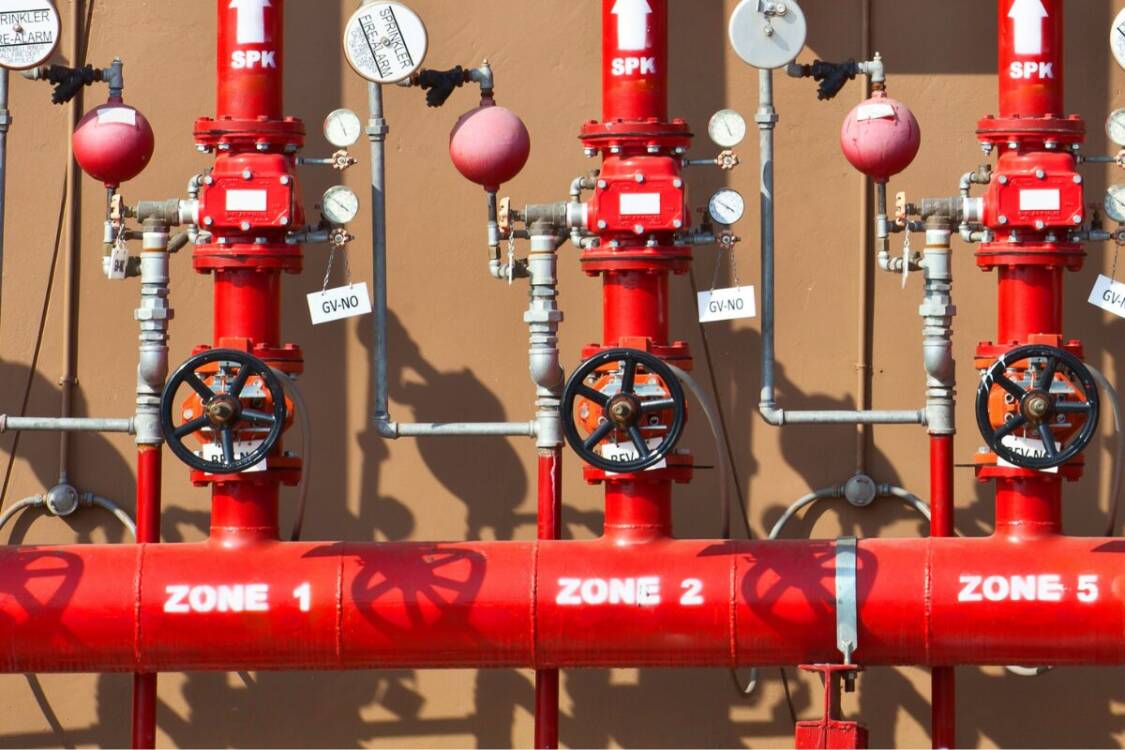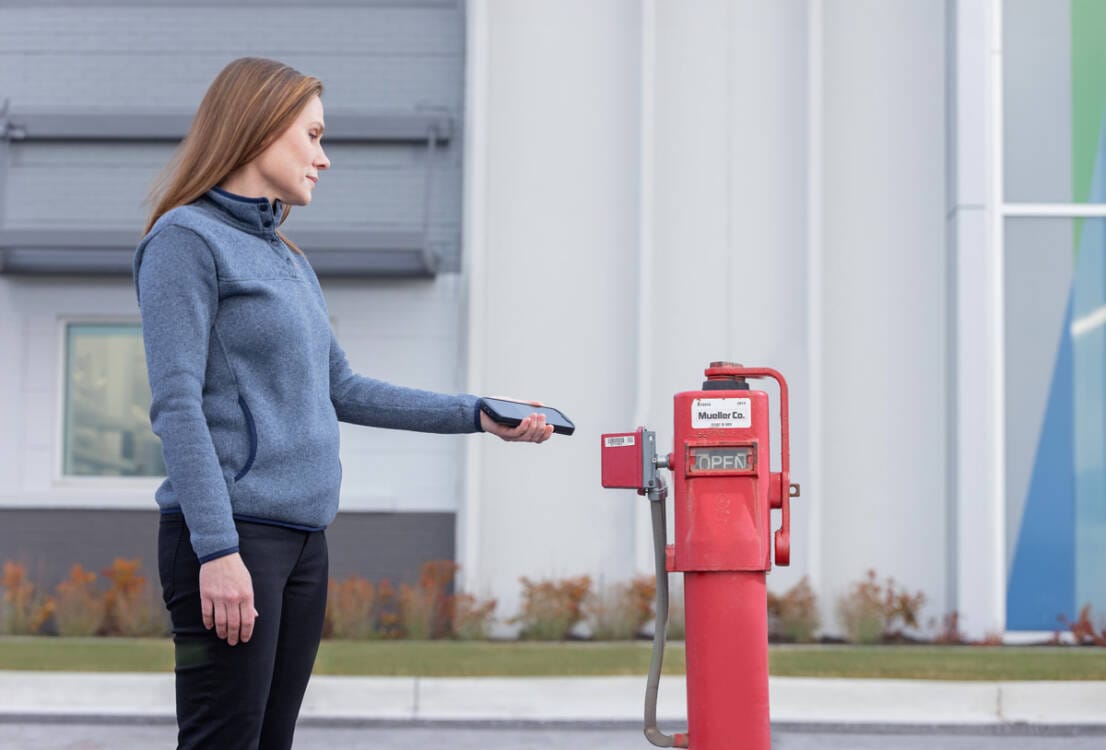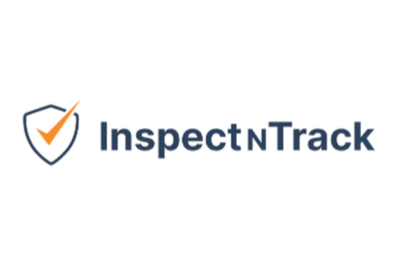This article specifies best practices for inspecting common valves on fire safety equipment and discusses how software can aid in the inspection process.
In fire safety systems, valves play a critical role in controlling and directing the flow of water, ensuring that fire protection measures such as sprinklers and hydrants function effectively when needed most. Regular inspections of these valves are essential to maintain system integrity, prevent failures, and ensure compliance with safety standards. This article explores the best practices for valve inspections in fire safety, offering guidance on how to conduct thorough and effective inspections that safeguard both life and property.
Common Fire Safety Valves
There are a wide variety of valve types and uses in fire safety equipment. Each kind of valve plays a crucial role in safeguarding assets and property, and therefore should be taken care of properly.
Oftentimes, valves are part of a larger fire safety measure such as a fire sprinkler system. The overall system may only require annual inspections, while the valves themselves need much more frequent attention and care. Because of this, it is imperative that building owners and property managers be familiar with the types of valves on their premises.
Here is a brief description about many of the most common forms of valves found on fire safety equipment along with their function and a visual depiction.
Valve Types to Know
| Valve Type | Description | Function |
|---|---|---|
| Check Valve | A check valve is a type of valve that allows fluid to flow in only one direction, preventing backflow. | Its primary function is to protect equipment and piping systems by ensuring that fluids or gases do not reverse direction, which could cause contamination, damage, or inefficiencies in the system. |
| Ball Valve | A ball valve is a shut-off valve that controls the flow of liquid or gas using a spherical disc with a hole through the middle. | Its function is to provide a quick and reliable way to start or stop flow with minimal leakage. Ball valves are commonly used in applications where tight sealing and ease of operation are essential. |
| Outdoor Valves | Outdoor valves are specifically designed to control the flow of water or other fluids in external environments. | Their function is to manage fluid flow in outdoor systems such as irrigation or fire protection systems, and they are built to withstand extreme weather conditions and physical damage. |
| Butterfly Valves | Butterfly valves are flow control devices that use a rotating disc to regulate fluid flow. | Their function is to allow for quick and efficient control of large volumes of fluid, making them ideal for applications where space and weight are limited, and where fast operation is necessary. |
| Pressure Relief Valve (PRV) | A pressure relief valve (PRV) is a safety device designed to automatically release excess pressure from a system. | Its function is to protect equipment, piping, and personnel by preventing pressure build-up that could lead to system failures, leaks, or explosions. |
| Outside Screw and Yoke (OS&Y) Valve | An Outside Screw and Yoke (OS&Y) valve is a type of gate valve where the stem rises visibly when the valve is open. | Its function is to provide a clear visual indication of the valve’s status (open or closed) and to reliably control the flow of water, particularly in fire protection systems. |
| Post Indicator Valve (PIV) | A Post Indicator Valve (PIV) is used in fire protection systems to control the flow of water to the sprinkler system. | Its function is to allow easy control and monitoring of water supply, with a visible indicator showing whether the valve is open or closed, ensuring quick action in emergencies. |
| Gate Valve | A gate valve is a valve that controls the flow of liquid by raising or lowering a gate into the flow path. | Its function is to either completely stop or fully allow flow through a pipeline, making it ideal for systems that require a full open or full close operation without the need for flow modulation. |

Best Practices For Valve Maintenance
Here are some tips and tricks for improving valve maintenance and running a proficient fire safety program.

Tips for Performing Inspections
- Check the Connection Strength: In general, valves are meant to help control the release or stop of water/gas/other substances. Because of this role, valve connections should be tight and secure, especially at inlet and outlet points. During inspections, test the strength of these connections. As a good rule of thumb, you should not be able to remove the valve from the connection by hand or hear unusual rattling sounds. In the event that the connection is loose, use a wrench to tighten up any connections that need it. If the connection isn’t getting resolved with the help of a wrench, the valve may need replacing. Remember to shut off the gas/water supply before loosening valve connections.
- Look for Wear on Parts: When inspecting valves, look for signs of wear, particularly around connection points and links. If they are looking worn, make note. Valves are meant to offer a safe and secure fit when they are in optimal condition. However, wear on the valve can result in a compromised ability to fulfill its function. If there are signs of wear, the valve(s) may need to be replaced.
- Examine Valves for Corrosion: Corrosion can result from gas or water leaking out of the system or external factors within your facility. Because corrosion can be indicative of leaks, it is valuable to check for signs of corrosion. While performing inspections, look for discoloration or flaking, as these can be signs of corrosion. If you find corrosion on your valves, determine whether it is a sign of leakage or a sign of outside factors (such as too much humidity or a spill). If the corrosion is due to a leak, consider shutting down the valve and replacing it with a newer one. If the corrosion is due to environmental factors, consider steps that can be taken to reduce the likelihood of corrosion in the future.
- Assess the Valve in Different Positions: Valves need to be assessed to ensure that they function properly. This can be done by opening and closing the valve and conducting tests downstream within the system. Performing these tests can be indicative of proper equipment function or the need for attention.
General Best Practices
- Routine Servicing: Valve types require different frequencies for inspection to ensure that they are functioning correctly. Servicing needs range from weekly to monthly, quarterly, and annually. As a result, managers should be familiar with regulations such as NFPA 25 and NFPA 13 to stay on top of the necessary care for fire sprinkler systems, fire hydrants, and other equipment. By creating and following a regular servicing schedule, companies can prolong equipment life and minimize the risk of accidents due to faulty materials.
- Ensure Qualified Personnel Inspect Valves: The responsibility to service and inspect valves should be delegated to a qualified maintenance team or individual. It is common for companies to have employees perform more frequent inspections in-house and hire other professionals for testing and inspection of entire systems. Any personal in-house performing valve inspections should be adequately trained to complete these jobs.
- Keeping Accurate and Updated Records: It is imperative that valve serving and inspections are documented promptly and accurately, either on physical paper or in software. Keeping a history of all these important dates and times, along with any notes, can be a source of vital information. Data from these records can be used to maintain an inspection schedule, prove compliance during audits, uncover trends, and more. Records should include information such as any replacements as well as minor servicing actions such as lubrication added or removal of corrosion.
- Utilize Software to Streamline Inspections: Using software to perform valve inspections for fire safety offers significant benefits. Software streamlines the inspection process by providing digital checklists, real-time data entry, and automated reporting, ensuring that no critical step is overlooked. It enhances accuracy, reduces human error, and ensures compliance with safety standards by maintaining thorough and accessible records. Additionally, software can schedule regular inspections, alerting teams to upcoming tasks and ensuring that all valves are inspected on time. By adopting software for valve inspections, organizations can improve efficiency, accountability, and overall system reliability, ultimately strengthening their fire safety protocols.
InspectNTrack: Premium Software for Valve Inspections
As was just mentioned, integrating software into fire safety programs is an industry best practice. The use of software can significantly decrease time needed to perform valve inspections and greatly improve compliance, team communication, record keeping, and much more. Because of these benefits, we want to share a little bit about our software solution and how it can aid in valve inspections.
InspectNTrack software is a mobile app designed with the user in mind. It is meant to simplify and streamline safety inspections, including those for valves. The goal of integrating software into inspections and safety programs is to help refine company processes, improve compliance, increase efficiency, simplify management, and ultimately to cultivate a safer working environment.
To accomplish these goals, InspectNTrack software is equipped with a multitude of purposeful, specialized features. These features are what make InspectNTrack the best valve inspection app on the market. Let’s dive into the top-tier features offered in this product and how they can be advantageous for performing valve inspections.
Customer-Loved InspectNTrack Features
Here are some of the most loved InspectNTrack features for valve inspections and fire safety.
- Mobile App: Because there is a mobile InspectNTrack app, our software can be used on any device that runs on iOS, Windows, or Android. It works with mobile phones, desktop computers, tablets, handheld scanners and more. This means that workers can carry the technology with them on the job site, in their pocket, vest, or hand. This helps users stay up-to-date on the most recent data and remain situationally aware.
- On-the-Go Reporting: A cool feature of InspectNTrack’s software is the fact that it doesn’t need wifi to function or update. Inspections can be completed from any mobile device with no data connection required. This enables users to perform inspections and record them digitally in real time, therefore removing the hassle of papers and filling out reports manually. Not only that, but it is designed to successfully perform both indoor AND outdoor valve inspections. In fact, our company even offers metal tags rated for outdoor use with a barcode, hole punch, and grommets that are easy to attach to valves. It can be used in hazardous areas, remote areas, and everything in between.
- Organized Documentation: INT valve inspection software offers a centralized data platform, meaning that all data can be stored in a single place. This helps to keep data organized and easily retrievable in the event of an audit. Within seconds, reports can be pulled up, shared, or printed.
- User-friendly Interface: InspectNTrack is known for having a user-friendly interface, which is crucial for widespread adoption within an organization. Thanks to images, clear wording, and easily navigable pages, INT software is an intuitive tool for most users. This makes it easy for workers, supervisors, and safety professionals to access and utilize the features seamlessly. With a user-friendly interface, it is easy for workers to perform and record their inspections.
- Dynamic Scheduling: InspectNTrack software can be used to stay up to date on both inspections and required maintenance. The system automatically schedules upcoming inspections for equipment to ensure that they are routinely completed. Scheduled inspections can be made according to company criteria. For example, inspections can be grouped together based on area, timing, or shifts. Additionally, an assignment can be completed by one person, or technicians can work together to complete an assignment. This feature helps remove the pain of managing various inspection schedules for different kinds of equipment, making compliance that much easier.
- Action Triggers: If there are any reported issues during inspections, the system will notify users of needed actions. These notifications encourage a prompt response to issues and help promote safety. Workers and managers alike can see what tasks need to be done and coordinate accordingly.
There are many other aspects of InspectNTrack that make it the ideal valve inspection app. To learn more about other features, talk to a specialist here.

Advantages of Using Software for Valve Inspections
As mentioned before, there are many reasons to conduct inspections on fire safety valves, including ensuring that equipment functions properly, to prevent accidents, and to maximize the lifespan of equipment. However, this section will highlight the advantages of using software to perform those inspections. All of these benefits and more are available to those who use InspectNTrack’s valve inspection app.
- Easy Documentation and Reporting: For any program to thrive, it needs to have a sense of order. With software, you can leave behind the hassle of manual reporting and reap the benefits of a structured system. There’s no need for Excel spreadsheets, loose papers, or calendars for inspection scheduling. This makes it much easier to record inspections as they occur, keep the data organized, and retrieve information when necessary.
- Improved Transparency: Transparency is a key component of any robust safety inspection program. By utilizing InspectNTrack software, inspectors can generate detailed, timestamped digital reports that include photographs, notes, and any identified issues. Since the software automatically updates without wifi, team members can access this data in real time. This transparency fosters trust among stakeholders and ensures that necessary actions are taken promptly to address safety concerns.
- Increased efficiency: Efficiency is a high priority for virtually all companies and organizations. Thankfully, software is changing the game when it comes to efficiency. Automation and digitization help to significantly streamline the inspection process. Instead of relying solely on manual checks, inspectors can use software to schedule inspections, access digital checklists, and more. With InspectNTrack’s valve inspection app, it is quicker and easier than ever before to perform inspections.
- Greater Accuracy: Accuracy is another crucial aspect of cultivating a safe workplace. One of the biggest ways that INT software fosters greater accuracy in reporting is the fact that it is all digital. This helps to reduce human error, because there aren’t any misplaced or lost documents. All system data and history is stored in a centralized platform, therefore reducing the risk of lost information.
- Simplified Compliance: Thorough reporting and documentation are needed for companies and organizations to be able to prove their compliance during audits. InspectNTrack’s valve inspection app simplifies compliance by providing automated scheduling of inspections and action triggers for identified issues that need attention. These features help managers ensure that an inspection schedule is kept up with and that problems are addressed, making OSHA compliance that much easier.
Get Started With Our Inspection Software
Want to learn more about what InspectNTrack is and how it can help with fire and life safety inspections? If so, connect with our team by requesting a demo! Our team of specialists are happy to set up a meeting to help you determine if INT software is right for your company’s needs. We believe in the power of our product to change the way safety is approached in the workplace and want to answer any questions you have. You may have come looking for valve inspection software, but InspectNTrack can do a whole lot more than that. We have a multitude of solution offerings, and hope that you will give us the chance to show just what InspectNTrack can do!
Conclusion
Valve inspections are a crucial component of fire safety, ensuring that essential systems function properly in the event of an emergency. Adhering to best practices, such as regular inspections, thorough documentation, and proactive maintenance, helps prevent system failures and ensures compliance with safety regulations. By incorporating software into the inspection process, organizations can enhance accuracy, efficiency, and accountability, making it easier to manage and track inspections. This combination of diligent practices and advanced technology strengthens overall fire protection efforts, safeguarding lives and property from the risks of fire.

